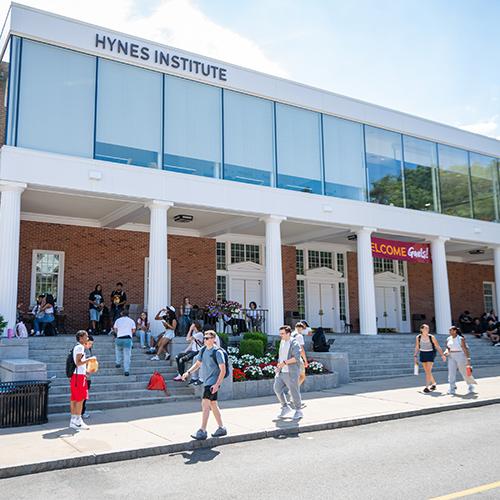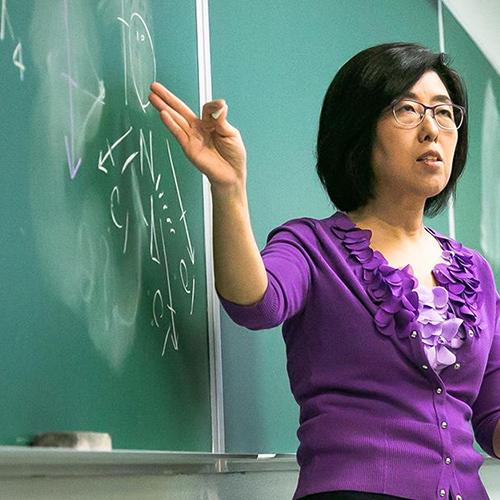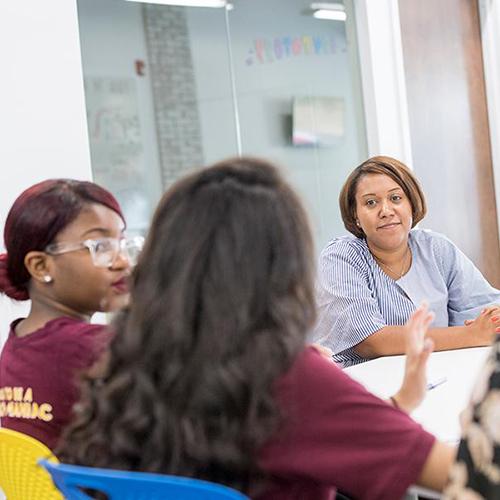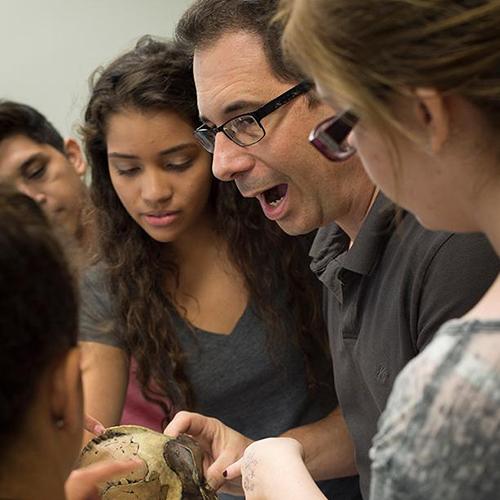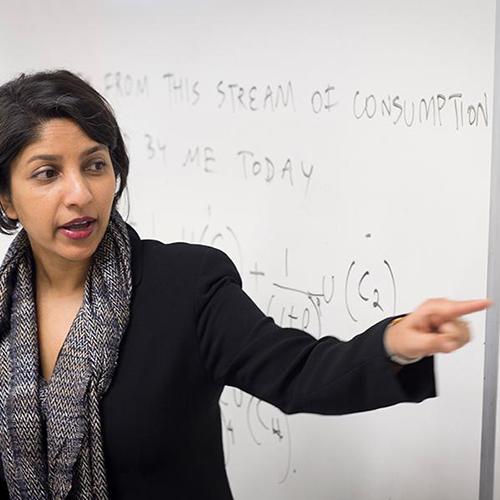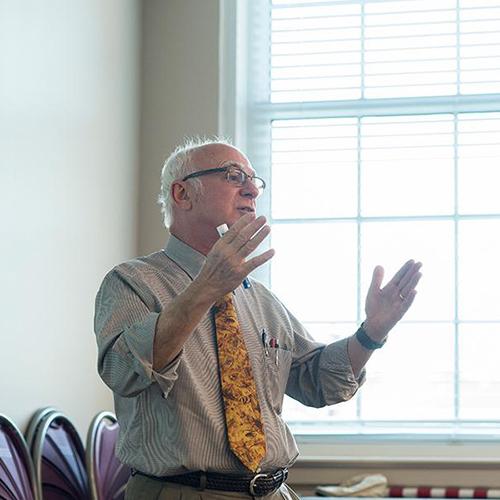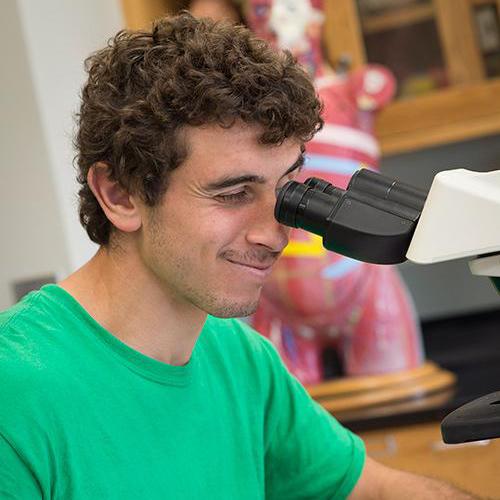Making a Career Change to Teaching
Making a career change is a major transition. There is often uncertainty when entering a new profession, and it may feel like you are starting over again. But, it can also be an exciting adventure, presenting opportunities to grow your professional skill set and pursue long-awaited career ambitions.
When you choose to teach as a second career, you open up a world of possibilities. As an educator, you have the chance to make a lasting impact on children of all ages and the privilege of being a part of their educational experience and their individual development.
Although switching to a career in education entails a substantial learning curve, it provides a rewarding and exhilarating professional life—full of opportunities to grow, expand your influence and inspire a new generation of learners.
How to Become a Second-Career Teacher
For many, the decision to make a career change to teaching is more challenging than becoming a teacher. As you embark on your pathway to a career in education, you should survey the professional landscape you intend to enter. Reviewing the educational requirements, certification pathways and career outlook are beneficial ways to ensure you are knowledgeable about the next steps and ready to proceed with your career change.
Decide Who and What You Want to Teach
When deciding to take on teaching as a second career, the first step should be deciding who and what you want to teach. Are you interested in teaching elementary, middle or high school? Do you want to teach freshman English Language Arts? Or, are you better suited to be an elementary music teacher?
Navigating these questions is heavily influenced by other variables, such as your previous professional experience, education and degrees earned and personal interests. By following your personal and professional interests, you are more likely to enjoy and excel in your new education career.
Beyond your professional aspirations, it is critical to consider the needs of your local school districts. You can browse local teaching job openings, talk to local teachers or school administrators, seek volunteer opportunities at your community schools or join an educator networking group on social media. These are helpful ways to scope out the education field in nearby school districts and see how your professional interests and strengths align with in-demand educator openings.
Taking the time to figure out your ideal teaching position is critical because it narrows your job search and allows you to enjoy your new career. It also informs the education and licensure processes you will need to complete to begin your teaching career.
Teacher Qualifications
Education Requirements to Become a Teacher
It is critical to assess how your education and previous experience inform your job transition to teaching as a second career.
Your route to becoming a teacher will look different from those who pursue an undergraduate degree in education; nevertheless, there are pathways to becoming a teacher without an undergraduate degree in education. However, some career changers find that earning a bachelors degree in education is the right choice for them.
Hold a Bachelor’s Degree
In many states, the minimum educational requirement to become a teacher is to hold a bachelor’s degree. However, you should evaluate your degree type and its ability to support your teaching endeavors; this will help determine your next education steps. If, for instance, you earned your degree in chemistry and wish to pursue a career as a high school chemistry teacher, then your undergraduate education informs your upcoming career change.
Enroll in an Educator Preparation Program
Even if your undergraduate degree supports the subject area you wish to teach, you must pursue a supplemental education program, often called an educator preparation program (EPP). EPPs provide second-career teachers with pedagogical training in lesson planning, student evaluation and assessment and other essential skills they need to become successful teachers. These preparation programs also include student-teaching placements, which are required to qualify for state certification.
Pursue a Graduate Degree
For prospective teachers interested in pursuing graduate-level education, enrolling in a master of science in teaching program may be a viable option. These degree programs offer comprehensive training in classroom management, child development and best pedagogical practices. They also include ample student teaching opportunities and lead to initial or provisional licensure, ensuring upcoming teachers are well-prepared for the classroom.
How to Get a Teaching Certificate
Once you’ve completed your chosen academic path, your next step is to obtain your teaching certificate. Most states require a valid teaching certificate to ensure teachers are proficient in their subject area and grade level and can prepare students to meet state standards and advance to the next grade level.
- To receive your teaching licensure, you must:
- hold a bachelor’s degree or higher;
- complete a student teaching experience;
- pass both a subject-specific examination and a state certification examination;
- pass a background check.
The requirements to earn your teaching license vary depending on the state in which you want to work. To learn more about your state-specific certification requirements, visit the U.S. Department of Education’s state contacts directory.
Career Outlook for Educators
The education field is continually evolving. Due to fluctuations in student numbers and staff turnover and changes in funding for education programs, there is always a need for educators.
On average, the U.S. Bureau of Labor Statistics projects elementary, secondary and special education careers to increase by four percent each year. This means 120,300 elementary, 47,300 middle school, 77,900 high school and 37,600 special education teaching jobs are projected to open annually.
It is also important to consider earning potential when considering switching careers. There are numerous determining factors when gauging earning potential, such as the state in which you want to live and teach, the school district and the type of school (public or private). The median national annual salary for kindergarten and elementary educators is $61,400. For middle and high school teachers, it is $61,320 and $61,820, respectively. Lastly, special education teachers earn an average annual salary of $61,820
Although graduate-level education is not always required by states and schools, pursuing an advanced degree can benefit a teacher’s earning potential. If you aspire to become a teacher and then assume higher-level administrative positions like a principal, then your median salary would increase to $98,420.
What Skills are Needed to Become a Second-Career Teacher?
Teaching is a collaborative process. No matter the age level or subject area, all teachers must have strong interpersonal skills. Without the ability to connect and communicate effectively with students and colleagues, the transition into teaching will be a difficult one. There are always challenges in taking on a new career; however, because cooperative relationships are the foundation of teaching, it is an essential quality to have as an educator.
Teachers need to be student-focused. The primary goal of teaching is to enrich the lives and minds of young people, and teachers play a critical role in children’s intellectual and personal development. When educators are committed to their students’ growth, their classrooms become a transformative environment where children expand their understanding of the world, discover their strengths and gain vital life skills.
Additionally, as an educator, you must be teachable and humble, especially when navigating teaching as a second career. While you may be in charge of your classroom, your learning does not end with a degree or certification. Your pedagogical methods and leadership style should be continually growing to ensure your classes receive quality instruction and that you remain effective and influential.
It is also important for teachers to be highly organized with strong time management skills. As a teacher, you have many students and responsibilities, including managing a classroom, maintaining accurate student records, monitoring student progress, and staying up to date with required training, procedures and certifications.
Master of Science in Teaching at Iona University
Iona’s Master of Science in Teaching (MST) degree empowers students to make an impactful career change and become the educator they’ve always wanted to be by equipping them with critical skills and cultivating their passion for teaching.
To provide students with comprehensive training and education targeted to their professional interests, we offer a variety of tracks for specific age groups and subjects, including:
- Adolescent Education (Biology, English, Mathematics, Social Studies or Spanish)
Childhood Education
Childhood and Special Education
- Childhood and Early Childhood Education
Our MST degree program is designed to prepare prospective teachers for the New York State Teachers’ Certification Examinations (NYSTCE), which grants teachers initial certification. Additionally, the program curriculum fulfills the New York State Education Department’s certification regulations and various national teacher accreditation associations’ standards, ensuring students are provided with high-value pedagogical training.
Inspire as a Second-Career Teacher
Making a career change is a major decision. But by following your passion for the education field and becoming a teacher, you can enrich your professional life and start inspiring a new generation of students.
Iona’s Master of Science in Teaching degree gives career changers the formal education experience they need to succeed in the classroom and earn their initial teaching certification. Taught by a devoted and experienced faculty, our graduate students receive transformative mentorship and are well-prepared to take on their new careers as educators.
To find out more about how Iona’s MST program can support your preparation for a career in education, visit Graduate Admissions.

